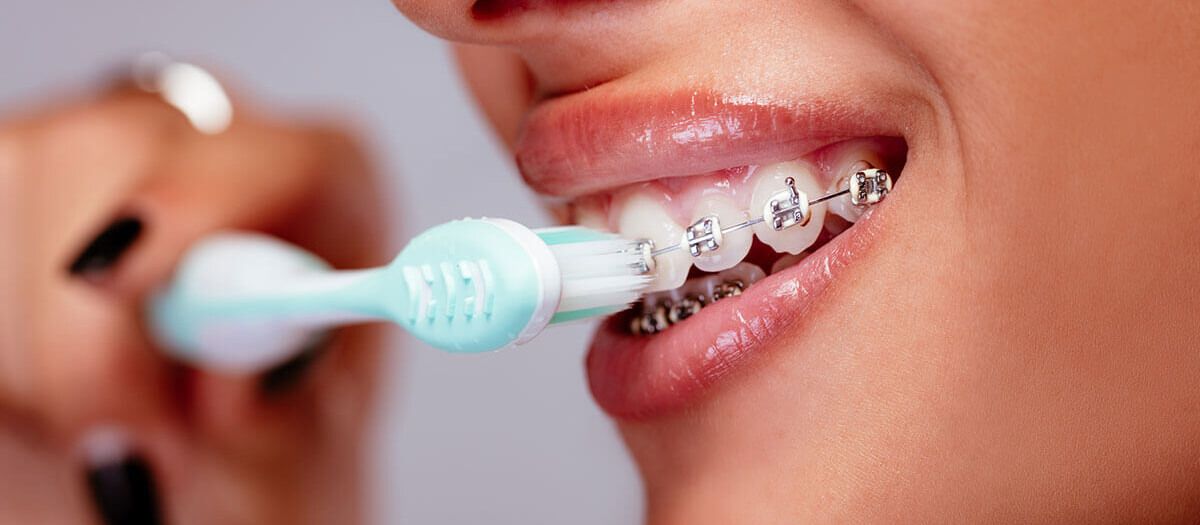Comprehensive Overview to Orthodontics Treatments for Fixing Dental Misalignments
In the world of orthodontics, the trip to achieving a perfectly aligned smile entails a myriad of procedures customized to fix oral imbalances. From conventional dental braces to unseen aligners and also surgical options, the area of orthodontics offers a series of remedies to attend to differing degrees of oral irregularities. Recognizing the complexities of each treatment, including their devices, advantages, and possible downsides, is crucial in making informed decisions about one's orthodontic therapy. As we navigate via the detailed guide to orthodontic procedures for fixing dental imbalances, the intricate details of each approach will certainly unravel, shedding light on the path towards a practical and harmonious dental alignment.
Orthodontic Procedures Summary

Along with typical braces and clear aligners, orthodontists might additionally recommend other treatments like headwear, palatal expanders, or retainers to attend to details placement issues (cumming aligners). These procedures are tailored per client's distinct requirements and may include a mix of therapies to attain the preferred results. Regular adjustments and tracking are crucial parts of orthodontic therapy to ensure progression is on track and to make any kind of needed alterations in the process. By going through orthodontic treatments, clients can not just achieve a straighter smile but additionally enhance their total oral health and feature.
Traditional Dental Braces: How They Function
When thinking about orthodontic therapies for dental misalignments, conventional braces stand apart as a time-tested approach for dealing with teeth placing. Typical braces are composed of braces, cables, and bands that collaborate to use continuous stress on the teeth, slowly moving them into the desired alignment. The braces are connected to the teeth utilizing a special adhesive, and the wires are threaded with the brackets. By readjusting the tension of the cords, orthodontists can manage the instructions and pressure related to each tooth, guiding them into appropriate positioning gradually.
One trick facet of how traditional braces work is the process of bone makeover. As pressure is used to the teeth with the braces, the bone bordering the teeth is improved to support the new tooth positions. This remodeling is vital for the long-term security of the dealt with alignment. People will need normal adjustments at the orthodontist's office to guarantee the dental braces proceed to apply the right pressure for reliable teeth activity.
Unnoticeable Aligners: Cons and pros
These clear, tailor-made trays are essentially unseen when put on, making them an enticing alternative for people general dentists seeking an extra visually pleasing orthodontic therapy. Individuals can remove the aligners before consuming or cleaning their teeth, minimizing the danger of food getting stuck in the home appliance and streamlining the cleansing process.

Surgical Orthodontic Options
Surgical interventions in orthodontics existing practical alternatives for attending to complicated oral imbalances that might not be successfully fixed via conventional orthodontic therapies. While traditional braces and undetectable aligners can deal with several orthodontic issues, specific instances need surgical treatment to achieve optimum outcomes. Surgical orthodontic choices are generally suggested for extreme malocclusions, considerable jaw inconsistencies, and cases where the underlying bone framework requires adjustment to achieve correct positioning.
One common medical orthodontic procedure is orthognathic surgical procedure, which involves rearranging the jaws to fix useful problems such as trouble eating or speaking. This surgical procedure is usually carried out in collaboration with an orthodontist who assists align the teeth before and after the procedure. Surgical orthodontics may likewise include treatments to subject impacted teeth, get rid of excess periodontal tissue, or improve the jawbone to create a much more harmonious facial account.
Before taking into consideration medical orthodontic alternatives, clients undergo a comprehensive evaluation to determine the necessity and prospective advantages of such interventions. cumming orthodontics. While surgical procedure might seem overwhelming, it can considerably boost both the feature and looks of the smile in situations where conventional orthodontic treatments fail
Retainers and Post-Treatment Treatment

Post-treatment treatment entails complying with the orthodontist's guidelines vigilantly. This may include appropriate oral hygiene techniques, going to follow-up appointments, and wearing the retainers as suggested. Failure to follow post-treatment care guidelines can result in regression, where the teeth progressively return in the direction of their original placements. Regular retainer wear, great dental health, and normal dental exams are essential for maintaining the outcomes achieved with orthodontic surgery and making sure the long-lasting stability of the fixed oral alignment.
Conclusion
In verdict, orthodontic treatments use various choices for dealing with dental imbalances. Surgical orthodontic alternatives are available for extra severe misalignments. Overall, orthodontic procedures can properly improve dental health and visual appearance.
As we navigate through the detailed overview to orthodontic procedures for fixing oral misalignments, the detailed information of each technique will certainly unfold, losing light on the course toward a useful and harmonious oral placement. - cumming invisalign
One of the most typical orthodontic treatments is the usage of dental braces, which are composed of steel brackets and cables that use gentle stress to gradually change teeth into the preferred position.When taking into consideration orthodontic treatments for oral misalignments, standard dental braces stand out as a time-tested technique for fixing teeth placing. Furthermore, unseen aligners might not be appropriate for complex orthodontic problems that need even more considerable teeth motion, as they are commonly suggested for light to moderate instances. Retainers are tailor-made orthodontic gadgets designed to hold teeth in their fixed settings after the completion of orthodontic therapy.